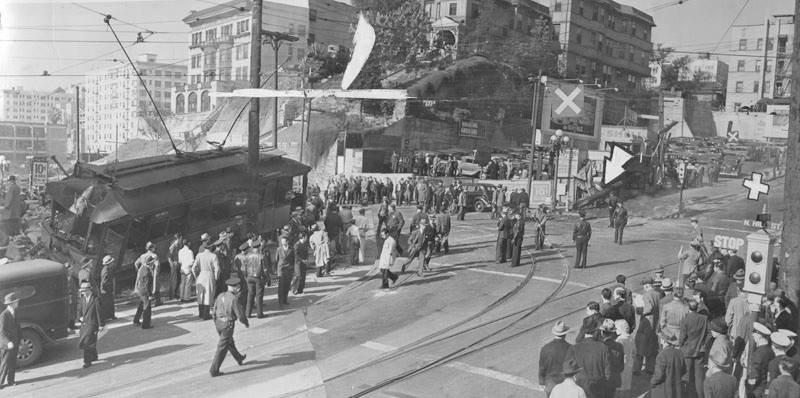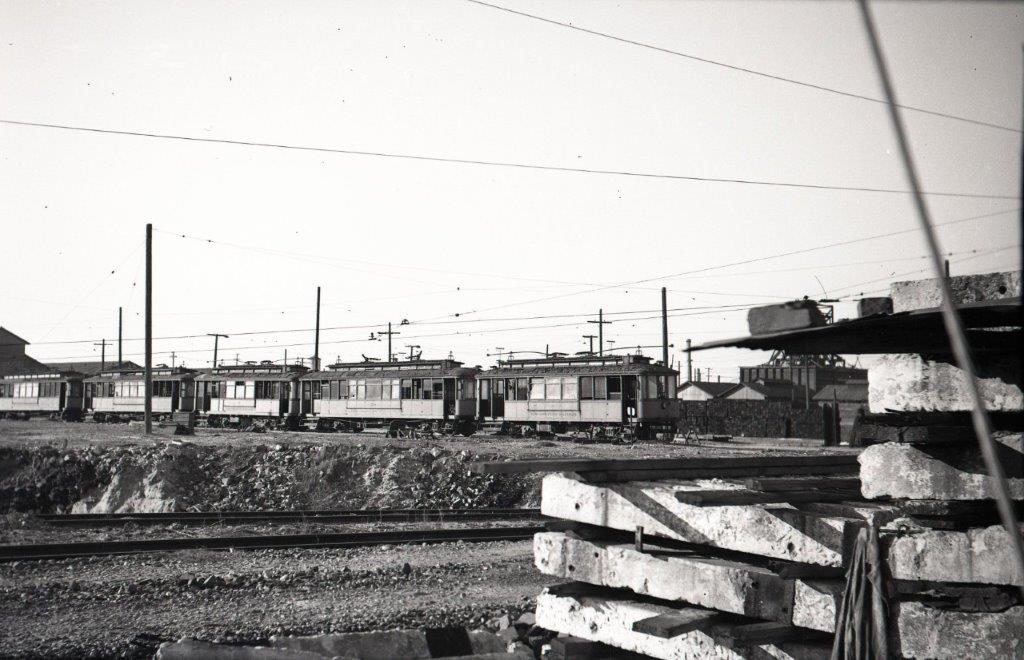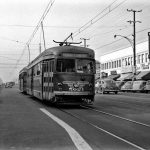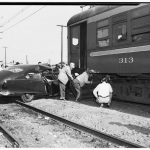LARY 4: A smashing end to a long career
By Ralph Cantos
The Los Angeles Railway’s fleet of MAGGIEs worked the hilly I line for several decades. Unlike the majority of LARY’s car fleet that used air brakes, the MAGIEs used an electric magnetic brake located between the wheels on the standard LARY archbar truck, not unlike the magnetic brake on the more modern PCC truck. The I line was not very long, just a few miles running between Bonnie Brea Street on the west, where a connection was made with the D line, to First and Hill Streets on the east end.
The magnetic brake worked very well, BUT there was one fatal flaw in the design. As long as the trolley pole remained on the power wire, all went well. But on this fatal day, the trolley pole on MAGGIE no. 4 de-wired as the 4 descended First Street towards its terminal at Hill Street.
With the trolley pole de-wired and swaying in the wind, the hapless 4 now had no braking ability save for the hand crank brake. One can only assume that the motorman made a valiant attempt to stop the 4 with the hand brake, but to no avail.
The 4 came rampaging down First Street, crossing Hill Street and smashing into a small building on the east side of the street. The results are depicted in these two photos. Remarkably, no one was killed, but there were 8 injuries. South Park Shops was famous for building and re-building hundreds of LARY streetcars, but the 4 was not worth rebuilding, it was too far gone, and was scrapped on the spot. The I line was abandoned a few months after this 1939 accident. The remaining MAGGIEs were placed in storage at the sprawling Vernon Yard and were eventually scrapped during World War II.
Ralph Cantos Collection
Inside and out of an LARY MAGGIE.
MAGGIE no. 6 and one other sit on the scrap track along with retired Standards at Vernon Yard, 1943.








The body of LARy 7 is preserved at Orange Empire. One advantage PCC cars have is that their magnetic brakes are energized from a 32 Volt storage battery, independent of trolley power.
The photograph of Vernon Yard is very interesting as there appears to be a couple of four window Standards in the line up.
Wouldn’t the all-electric PCCs (3126-3165) behave in a similar manner if they lost electrical power?
The earliest and prototype PCC car in Brooklyn did have dynamic braking but no backup when it lost the trolley pole. As I understand it did and crashed and the whole concept was scrapped too until they developed a complicated battery operated braking system. Elsewhere in the world streetcars commonly were slowed down by essentially throwing the controller in reverse and then spinning a large wheel to manually pull the brake shoes against the wheels. It worked there but in the states it either wasn’t considered safe or none of the operators seemed to learn how to operate it.